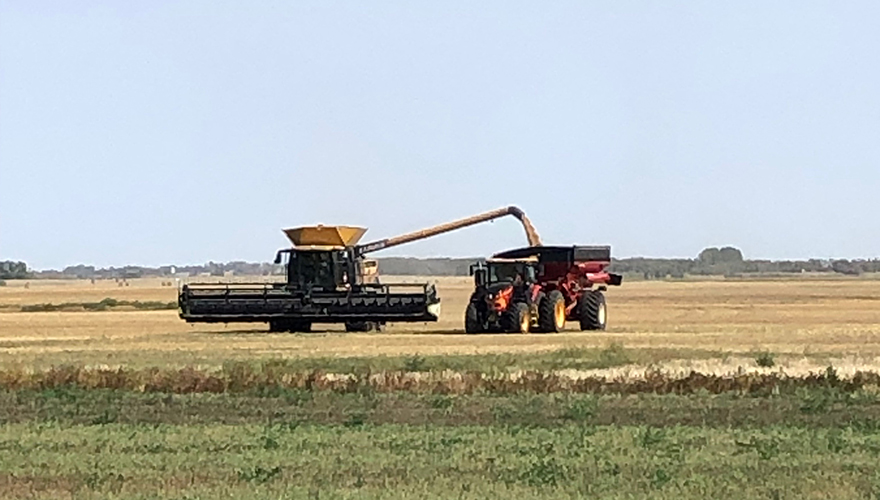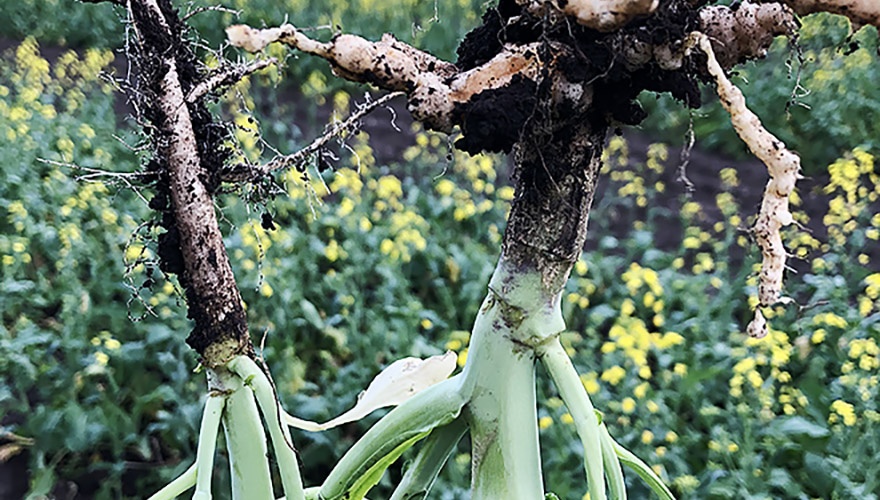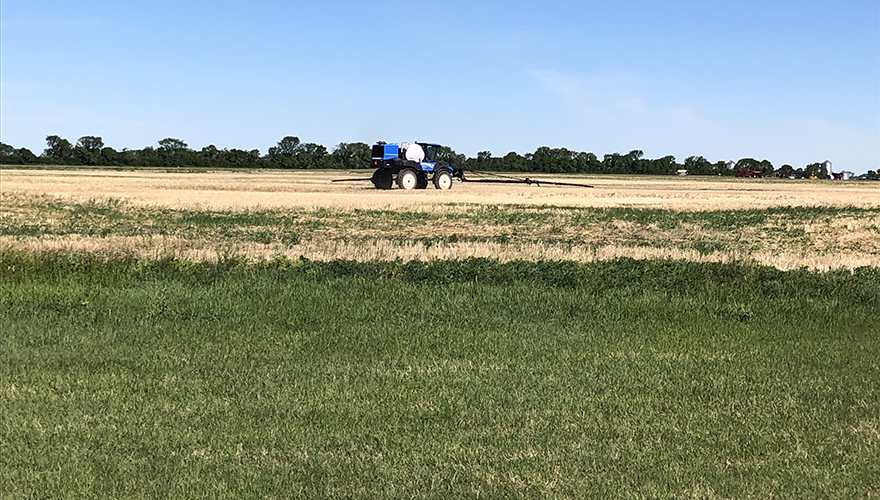Posted May 13, 2020 | By: Greg Smith
Assessing Corn Emergence
As new shorter season corn hybrids become available, more farmers are choosing to grow corn for silage and grazing purposes as well as the grain market. However, there are some that may be hesitant about adding corn to their rotation, for a number of reasons.
To begin with, it is one of the more costly crops to grow. A bag of corn seed is expensive and will only do a few acres, and you also need a unique piece of seeding equipment, a corn planter.
Corn is also a very hungry plant that likes high moisture and requires a fair amount of fertilizer — about 12.5 pounds of nitrogen for every ton of silage corn.
For those farmers on the fence about corn, I think it’s definitely a crop worth considering. Corn is a newer crop in some areas of the Prairies and given our climate, there are risks involved in growing it here. However, when the proper steps are taken to ensure corn is grown the right way, there’s a good chance the rewards will outweigh the risks.
Not only is corn a high-value crop, but it also out-performs barley as a silage crop. The potential tonnage per acre of silage corn is much higher than it is for barley, and it will provide a lot more of the carbohydrates and sugars that cattle need.
The key to having a productive and profitable corn crop is to ensure it gets off to good start.
Corn needs more heat than some other crops, and it can be slow to come out of the ground if conditions aren’t right. That’s why it’s important to always try to seed corn into warm soil.
As a general rule, the soil temperature should be 7 to 10 C before you start seeding corn, but there is one way you can lend a helping hand prior to planting. When seeding corn into a field with heavy crop residue, remove the trash and darken the soil to enable the ground to take in more heat.
As we all know, it can get chilly in the spring. If you seed corn too deep and it’s too cold, it will take longer for the crop to come out of the ground and there may be uneven emergence.
If there’s a cold snap after planting, this can also lead to delayed and uneven corn emergence.
When a corn seed emerges 48 hours before the one beside it, the two plants will compete against each for moisture and nutrients. Plants with delayed emergence often have stalks that are shorter and thinner in diameter and they also produce smaller ears, especially in high-population environments.
This is why having a uniform plant stand is critical for yield potential.
To avoid uneven emergence, a good rule of thumb is to plant corn seeds at a depth of at least one inch (any less than that and plants may fall over due to inadequate root support) and no more than two inches. Proper spacing within a row is also essential — four to eight inches between each corn seed is recommended.
Some farmers will opt to use air seeders to plant corn, but they’re not as reliable as corn planters for providing the uniform seed placement that’s required for a good crop. If there are misses within a row, this can lead to increased weed pressure which in turn will have a negative impact on yield.
Before heading out to the field with a corn planter, it’s crucial to make sure everything is in good operating condition. Once you’re seeding, it’s also important to not drive too fast because that can lead to uneven seed placement.
The minimum tillage trend in Western Canada has meant many farmers have fields with lots of indents and bumps, which can make for a rougher ride for farm equipment.
Try to keep the corn seeder from bouncing, because with every bounce, the seeding depth will also jump around — to as little as half an inch in depth to up to three inches or more.
Keeping your speed at a steady five miles per hour will prevent the corn seeder from bouncing around, which should help to ensure the corn seed is being placed at a consistent depth. This increases the likelihood of a uniform corn stand that delivers what every farmer is looking for: a bountiful crop at harvest.
FEATURED LINKS
NEWSLETTER
Want to stay caught up in all things agriculture? Sign up for the newsletter and get all the latest news straight to your inbox.
Scouting For Pea Leaf Weevils
Posted May 19, 2020





